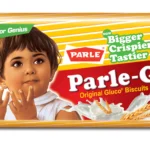When we think of Ghadi detergent, the catchy tagline, “Pehle istemal karein, phir vishwas karein” (First use, then trust), comes to mind. But this tagline wasn’t always well-known, and Ghadi’s journey to becoming one of the leading detergent brands in India is a story of perseverance, strategic thinking, and sheer hard work. Let’s dive into the inspiring tale of how this brand overcame significant odds to carve its place in the competitive Indian detergent market.
Humble Beginnings of Ghadi Detergent
The story of Ghadi detergent began in 1987 in Kanpur, Uttar Pradesh, when two brothers, Murli and Vimal Gyanchandani, decided to expand their father’s modest soap business. Their father was already engaged in producing glycerin-based soaps, but the brothers had bigger dreams. With a small factory near the Fazalganj fire station in Kanpur, they ventured into the detergent industry, naming their brand Ghadi.

At that time, the market was dominated by giants like Nirma, a household name in India, and Hindustan Unilever’s Surf and Wheel. These brands had substantial resources and well-established distribution networks, making it challenging for a small company like Ghadi to stand out. The Gyanchandani brothers had little money for advertising, which is why they resorted to selling their product door-to-door. Often, they would travel by foot or ride their bikes, introducing Ghadi detergent to households one at a time.
The Competitive Landscape: Battling the Big Players
During the late 1980s, India’s detergent market was largely divided between premium brands like Surf and cost-effective alternatives like Nirma. While Surf catered to the affluent class, Nirma’s affordability made it popular among the masses. Yet, a gap remained for a mid-range product that could provide better quality than Nirma but at a lower price than Surf.
Recognizing this opportunity, Murli and Vimal positioned Ghadi detergent as a superior yet affordable choice. They aimed to appeal to middle-class families who sought quality but couldn’t afford the high prices of premium detergents. Despite this strategy, the road to success wasn’t easy. Competing against established brands with their significant advertising budgets required a different approach.
Innovative Strategies: Standing Out with a White Detergent
The Gyanchandani brothers realized that their product needed to offer something different from the existing options. Most detergents at that time were either blue or yellow, so they decided to launch a white detergent. This move set them apart in the eyes of the consumers, who associated the white color with purity and effective cleaning.
Moreover, they came up with the memorable tagline, “Pehle istemal karein, phir vishwas karein,” which translates to “Try it first, then trust it.” This line resonated with the audience, creating a sense of curiosity and trust around the product. The idea that the company had so much confidence in its product that it encouraged a trial before forming an opinion was refreshing and innovative.
Expansion and Growth in Uttar Pradesh
Starting in Kanpur, the brand gradually expanded across Uttar Pradesh, India’s most populous state. The brothers’ strategy was to first secure a solid base in their home state before expanding further. This approach paid off, as Uttar Pradesh alone contributed around 17% to the total FMCG sales in India, making it an ideal testing ground for Ghadi detergent.
To compete effectively, Ghadi offered its distributors a commission of 9%, higher than the industry standard of 6%. This move motivated distributors to prioritize Ghadi over other brands, significantly improving its market reach. Availability and visibility increased, and soon, Ghadi detergent was present in small neighborhood shops across the state.
Cost Control Measures: Maximizing Efficiency
Despite offering higher distributor commissions, Ghadi’s founders maintained a tight grip on costs. They set up small distribution hubs every 200 to 300 kilometers, reducing transportation expenses and ensuring quicker delivery of products. This network helped them maintain a lean operation, even as they expanded their footprint beyond Uttar Pradesh into neighboring states like Bihar and Madhya Pradesh.
Their focus on operational efficiency helped them balance the higher distributor commissions with profitability. By the early 2000s, Ghadi detergent was making waves in the Indian market, and in 2002, the company reached a significant milestone with sales crossing ₹100 crores. This marked a turning point, enabling them to further scale up their operations.
Rebranding and Diversification: The Birth of RSPIL
In 2005, the Gyanchandani brothers decided to rebrand their company as Rohit Surfactants Private Limited (RSPIL). The rebranding allowed them to integrate their various products and streamline operations, preparing the company for the next phase of growth. RSPIL also ventured into other sectors, including personal care products like shampoos, toothpaste, and liquid handwash.
In 2010, they established a new production unit in Haridwar, which enabled them to reach new markets more efficiently. With this expansion, Ghadi detergent began making its presence felt in larger cities like Delhi and Mumbai. The company’s growth was no longer limited to small towns and rural areas; it was now becoming a well-recognized brand across India.
Capturing Market Share and Innovating Continuously
As Ghadi detergent’s popularity grew, its biggest competitor, Nirma, began to lose ground. Ghadi capitalized on Nirma’s decline, positioning itself as a superior alternative while maintaining an affordable price point. This shift in market dynamics allowed Ghadi to become a major player in the Indian detergent industry, even surpassing Nirma in sales by 2011.
However, Ghadi’s success was not solely due to better pricing. The company was quick to understand consumer behavior, particularly the habits of housewives who often equated quality with rich lather. Ghadi highlighted its product’s ability to produce more foam, positioning it as the best choice for effective cleaning. This marketing strategy further strengthened its brand perception.
Advertising on a Budget: Train Branding
In its early days, Ghadi detergent couldn’t afford the high costs of television ads and celebrity endorsements. But the Gyanchandani brothers came up with a unique solution—advertising on trains. They began placing advertisements on the exteriors of major North Indian trains like the Pushpak Express and Swarn Jayanti Express. This innovative approach allowed them to reach a broad audience at a fraction of the cost of traditional media advertising.
By also placing small posters inside train compartments, Ghadi managed to significantly boost its brand visibility. This method was not only cost-effective but also positioned Ghadi as a brand that understood the grassroots level of the market.
Challenges and Strategies for the Future
Despite its success, Ghadi detergent faces stiff competition from both national giants like Surf and Ariel and regional brands such as Fena and Mr. White. To maintain its edge, the company needs to invest in research and development to adapt to changing market trends and consumer preferences. Innovation remains key to staying relevant in the rapidly evolving FMCG sector.
Another critical challenge is expanding its market presence beyond Northern India. While Ghadi enjoys widespread recognition in states like Uttar Pradesh and Madhya Pradesh, it is less known in the Southern markets. Building a national presence is crucial for sustaining long-term growth, and this requires targeted marketing campaigns that resonate with the local preferences of different regions.
Family-Run Success: A Legacy of Resilience
Today, Ghadi detergent remains a family-run business, with Murli and Vimal Gyanchandani still at the helm of day-to-day operations. Vimal’s son is involved in overseeing the brand’s marketing strategies, while Murli’s son plays a key role in business development. This continuity has allowed the company to remain rooted in its founding principles while adapting to new market demands.
Beyond detergents, the Gyanchandani family has also ventured into the dairy sector with their brand Namaste India, which has become a well-known name in the dairy market. This diversification reflects the family’s entrepreneurial spirit and commitment to growth.
The Future of Ghadi Detergent in India’s FMCG Market
With over three decades of market presence, Ghadi detergent stands as a testament to how resilience and smart strategies can lead to success. It is a story of two brothers who started with a small factory in Kanpur and turned their vision into one of India’s leading detergent brands. By focusing on consumer needs, maintaining a competitive pricing strategy, and finding innovative ways to advertise, Ghadi detergent has become a household name across much of India.
Looking ahead, the company’s ability to innovate, expand into new regions, and keep pace with consumer trends will determine its position in the market. If Ghadi can maintain its momentum and leverage its deep understanding of the Indian market, it has the potential to continue being a leader in the detergent industry for years to come.









